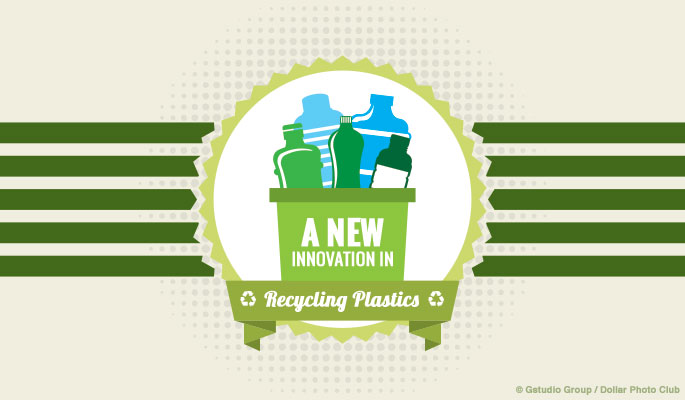
The quest to create a form of plastic that is not only useful but fully recyclable has been a holy grail of sorts for material scientists. ZME Science reports that some researchers at Colorado State University have achieved this goal, using a material called Gamma-butyrolactone (GBL), a liquid, colorless and fairly common chemical reagent derived from a top-12 biomass compound. Until now, GBL was not considered capable of being turned into a polymer. The material is not based on petroleum and is totally recyclable and biodegradable.
A lot of plastic that is called recyclable is labeled thus because it can be repurposed. Plastic bottles and bags can be cleaned and reused. But they cannot be broken down into their component parts and then rebuilt. Most plastic goes into landfills or, worse, the ocean, where it cannot be broken down by any known biological process.
The material used by the Colorado State University researchers had hitherto not been thought capable of being turned into a polymer, called Poly(GBL) using a low-temperature process. The recycling innovation comes into play because the polymer can be broken down to its original components using heat at 220-300 degrees Celsius or 428-572 Fahrenheit. That means that plastic cups, containers, cutlery, bottles, and other things made of the new plastic can be broken down, then reformed into different products,
The new polymer is cheaper to make than the other main biodegradable plastic, P4BH. It has an exciting market potential, with a patent already filed with the help of a company called CSU Ventures.




































































































































 Three Ways to Engage Teams and Clients to Maximize Your Recycling Program Engagement
Three Ways to Engage Teams and Clients to Maximize Your Recycling Program Engagement  How to Integrate Accessibility Into Your Sustainability Planning
How to Integrate Accessibility Into Your Sustainability Planning  Why Park Benches Can Promote Workplace Well-Being
Why Park Benches Can Promote Workplace Well-Being 
